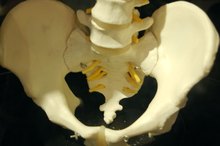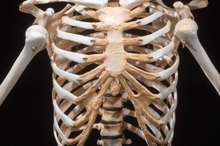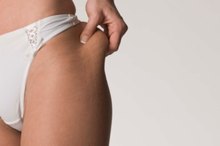Male Vs. Female Skeleton
The human skeletal system is the internal scaffolding that supports the rest of the body and protects the vital organs. Although there is only one fundamental human skeletal architecture, there are several structural differences between the male and female skeletons.
Mass
In general, male skeletons are larger and heavier than female skeletons. Most experts, however, would say that skeletal mass alone would not be a very accurate basis for determining whether a particular skeleton is male or female. There are, after all, tall women and short men. To make the comparison more meaningful, differentiations of size and weight should be made within the context of racial groups, e.g. Caucasoid male skeleton versus Caucasoid female skeleton.
Limbs
The Male & Female Pelvic Differences
Learn More
Another general difference between male and female skeletons can be observed in the limbs. The humerus, ulna and radius, which are the major bones that comprise most of the arm, are thicker and longer in men. The phalanges--the bones that comprise the fingers--are also bigger, which is why most men have bigger hands than women. The same goes for the lower limbs, which are supported by the femur, tibla and fibula bones--all typically longer in men.
Skull
Male and female skulls also show significant differences in structure. The small bulge at the back of the head known as the external occipital protuberance is usually more pronounced in men. The male jawbone or mandible is typically angular and square-shaped at the chin area, while the female jawbone tends to be more rounded and pointed. The brow ridges of men are often more prominent than those of women. These distinctions in cranial and facial features underlie the basic difference between men's and women's faces.
Pelvis
Four Main Parts of a Skeletal System
Learn More
The major difference between female and male skeletons is in the pelvis, which is due to another major difference between men and women--childbirth. The female pelvis is smaller, shallower and wider, and the cavity is more circular in shape. The coccyx or tailbone, which is the last bone of the spinal column, is more movable in female skeletons. The sacrum, which is a triangle-shaped bone also at the end of the spine and connected to the pelvis, is wider and flatter in females. All these distinctions contribute to the process of childbirth, particularly allowing for the head and shoulders of the child to pass through the cavity.
Bone Development
The differences in male and female skeletons are due in part to the hormones that affect bone development. Testosterone is the primary influence that shapes men's bones, while estrogen has a greater effect on women's bone development. From infancy, both men and women have relatively malleable bone cartilage, called epiphyseal plates, that grow and become firm and solid when they reach a certain age. The high levels of estrogen that happen during female puberty cause an earlier closure of these particular cartilages. At around the age of 18, women's bones are already set, while male bone development ends at around age 21, allowing men more time to gain bone mass.
Related Articles
References
- Women's Health and Fitness Guide; Michele Kettles, Colette L. Cole, Brenda S. Wright; 2006
Resources
Writer Bio
LaTasha Favors has been writing professionally since 2008. She specializes in travel- and health-related topics and has published articles on various websites, including Search-costa-rica.com and MyFrenchRealEstate.com.









